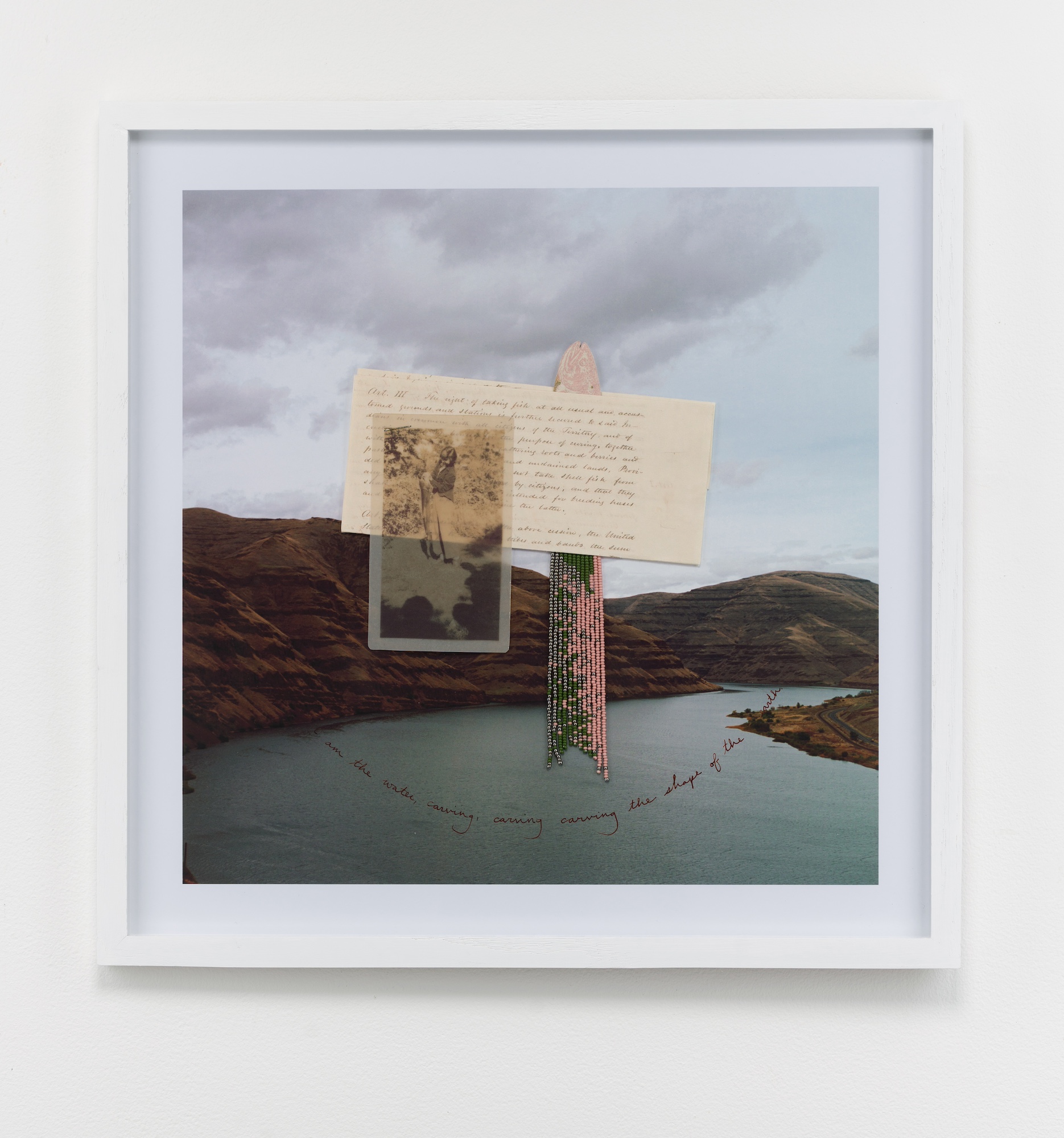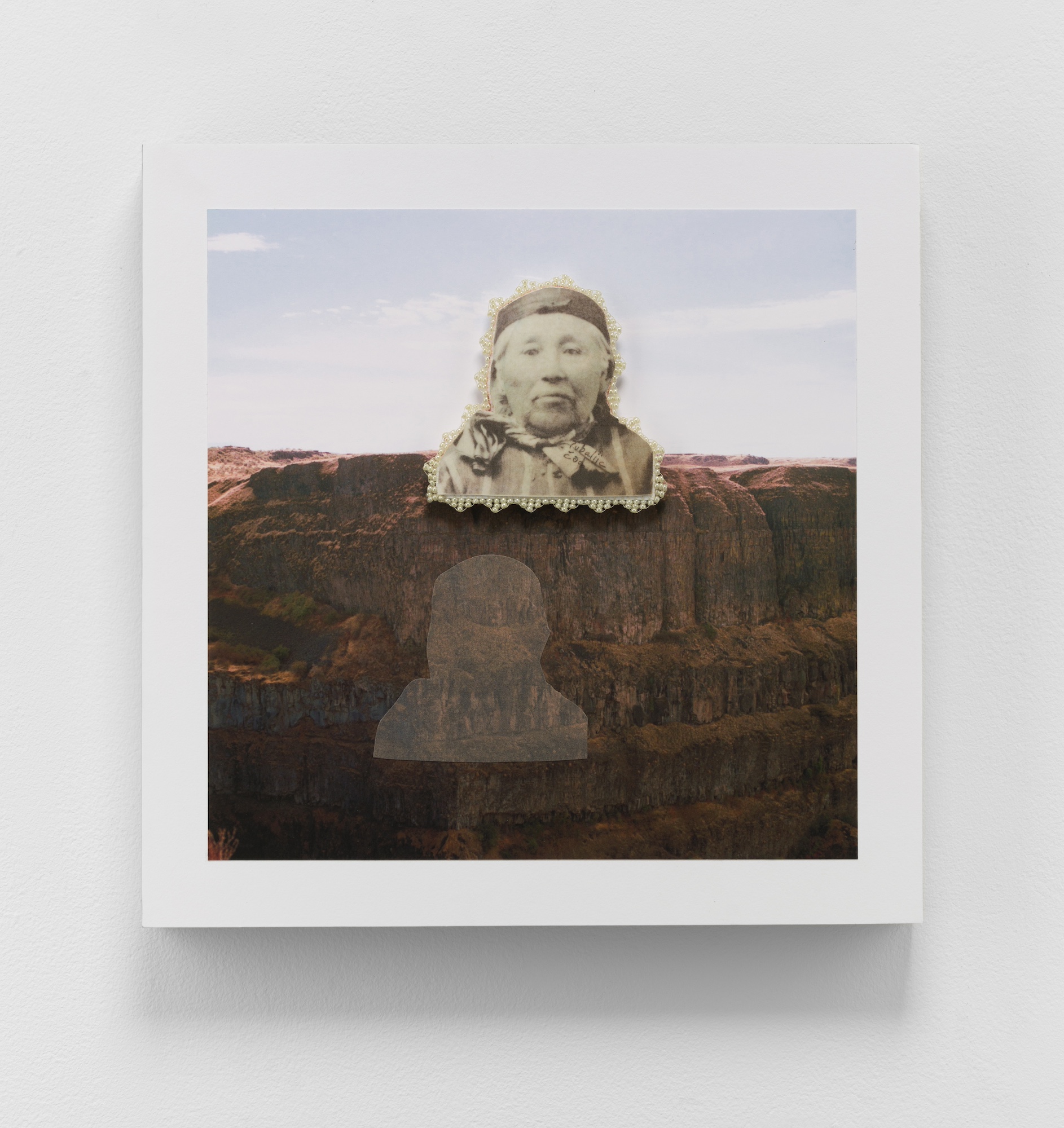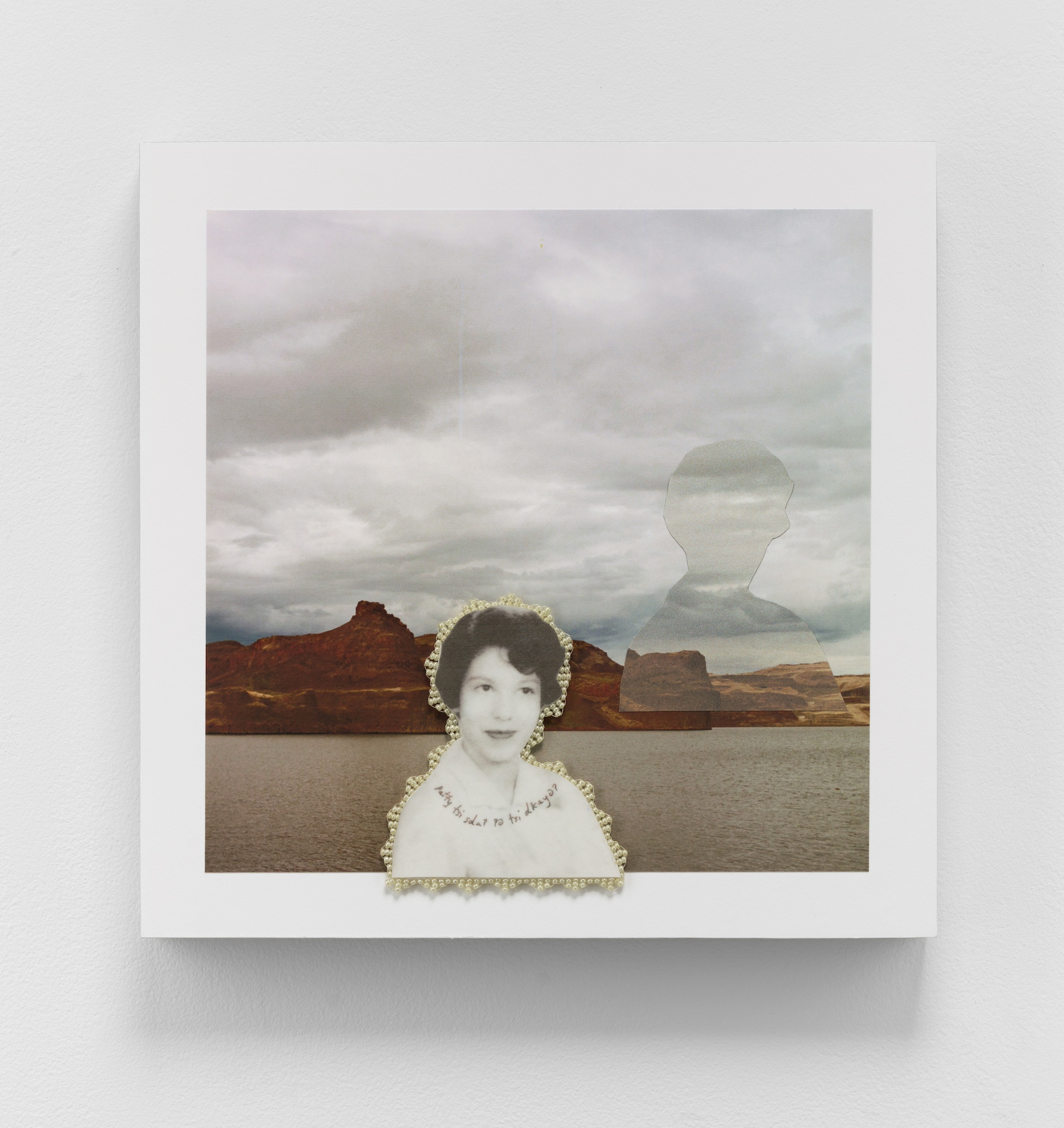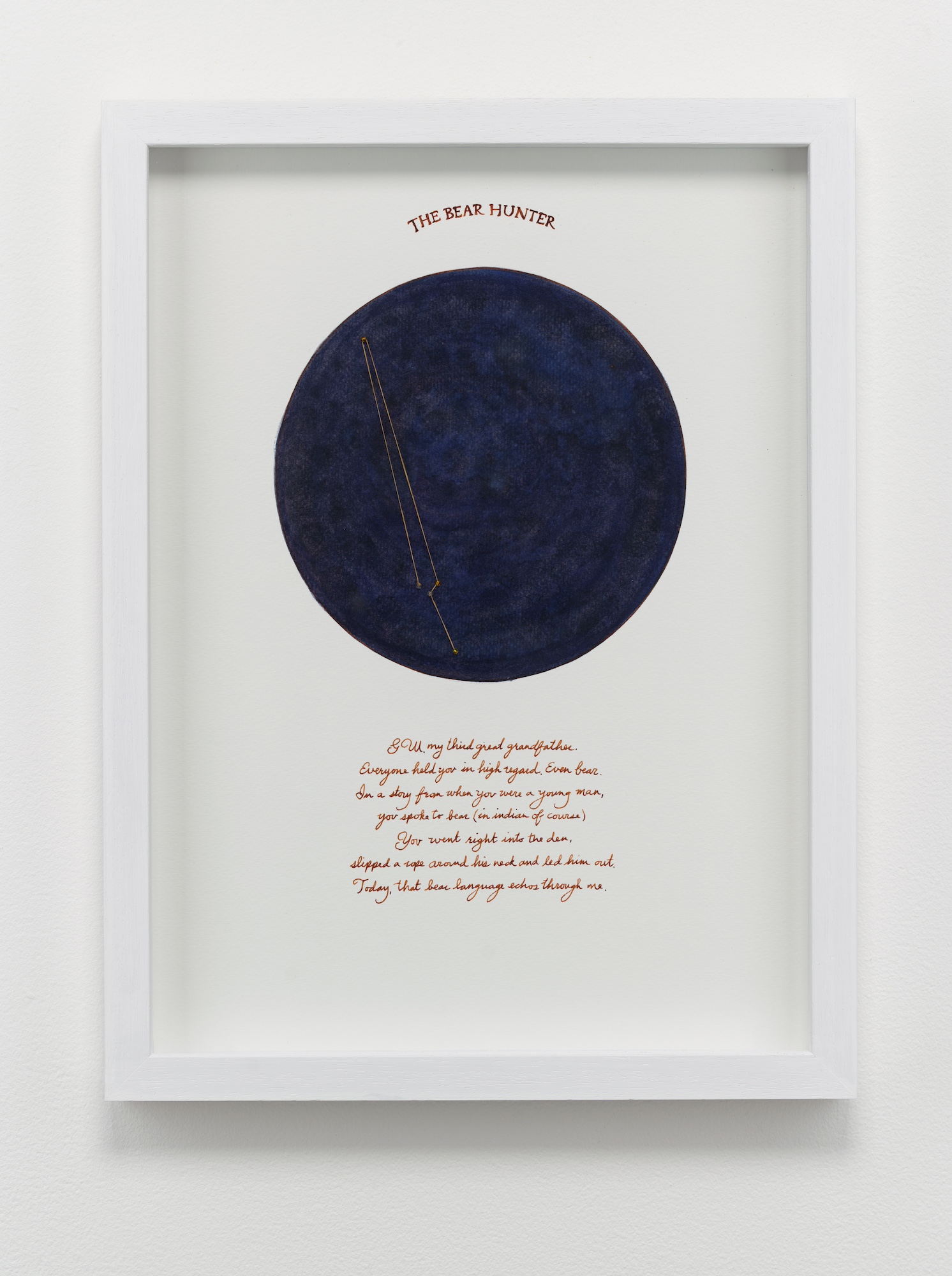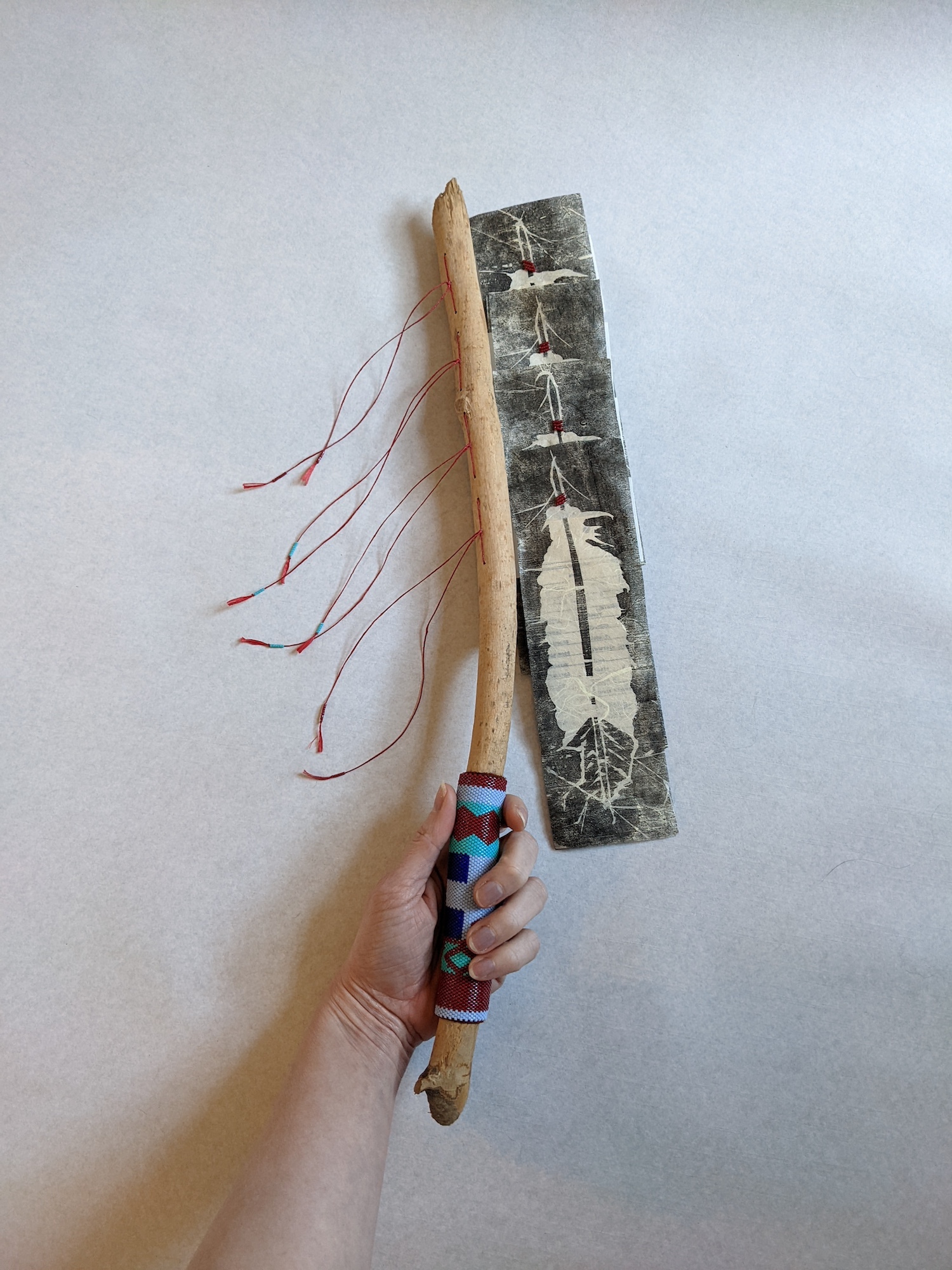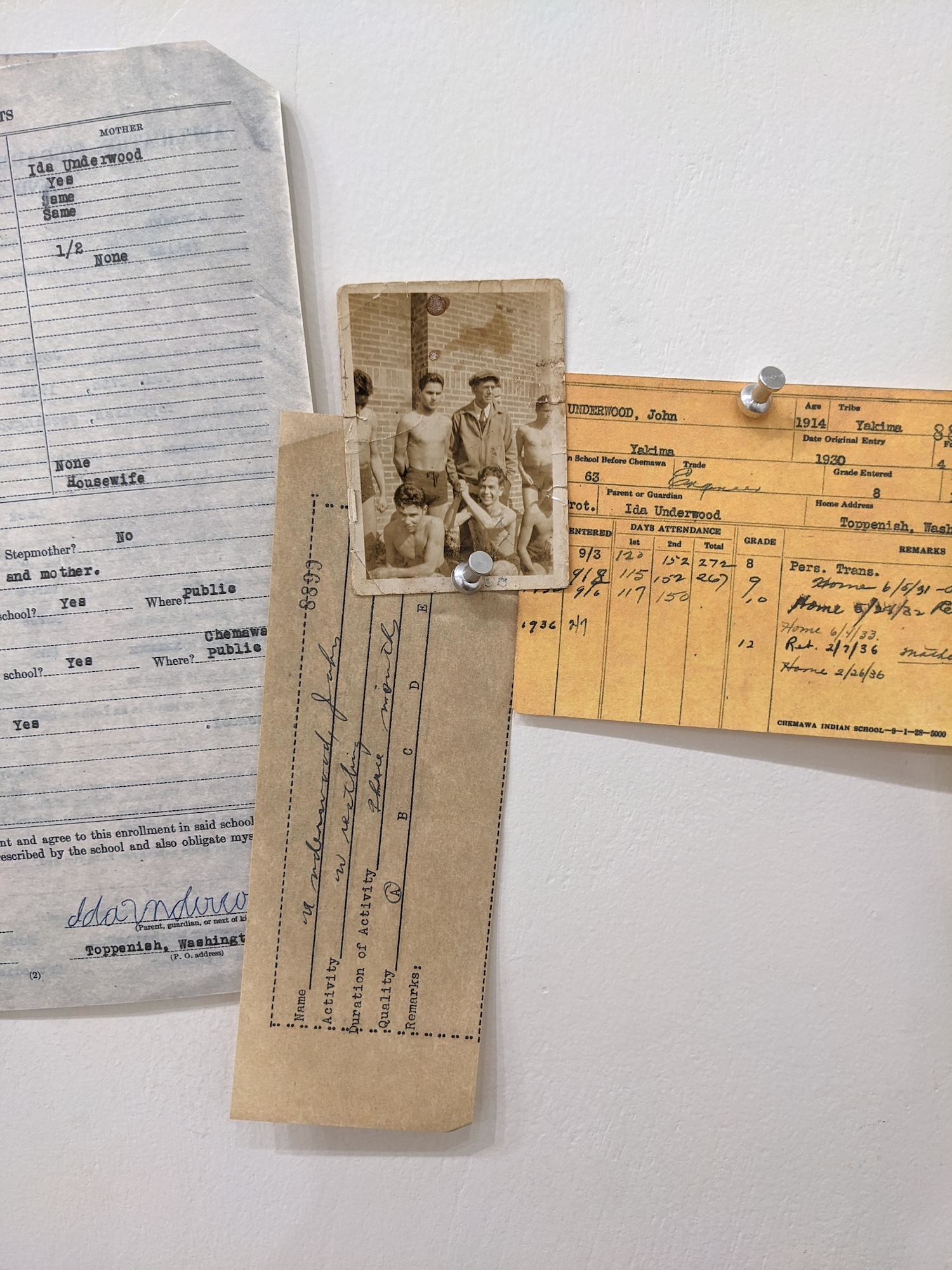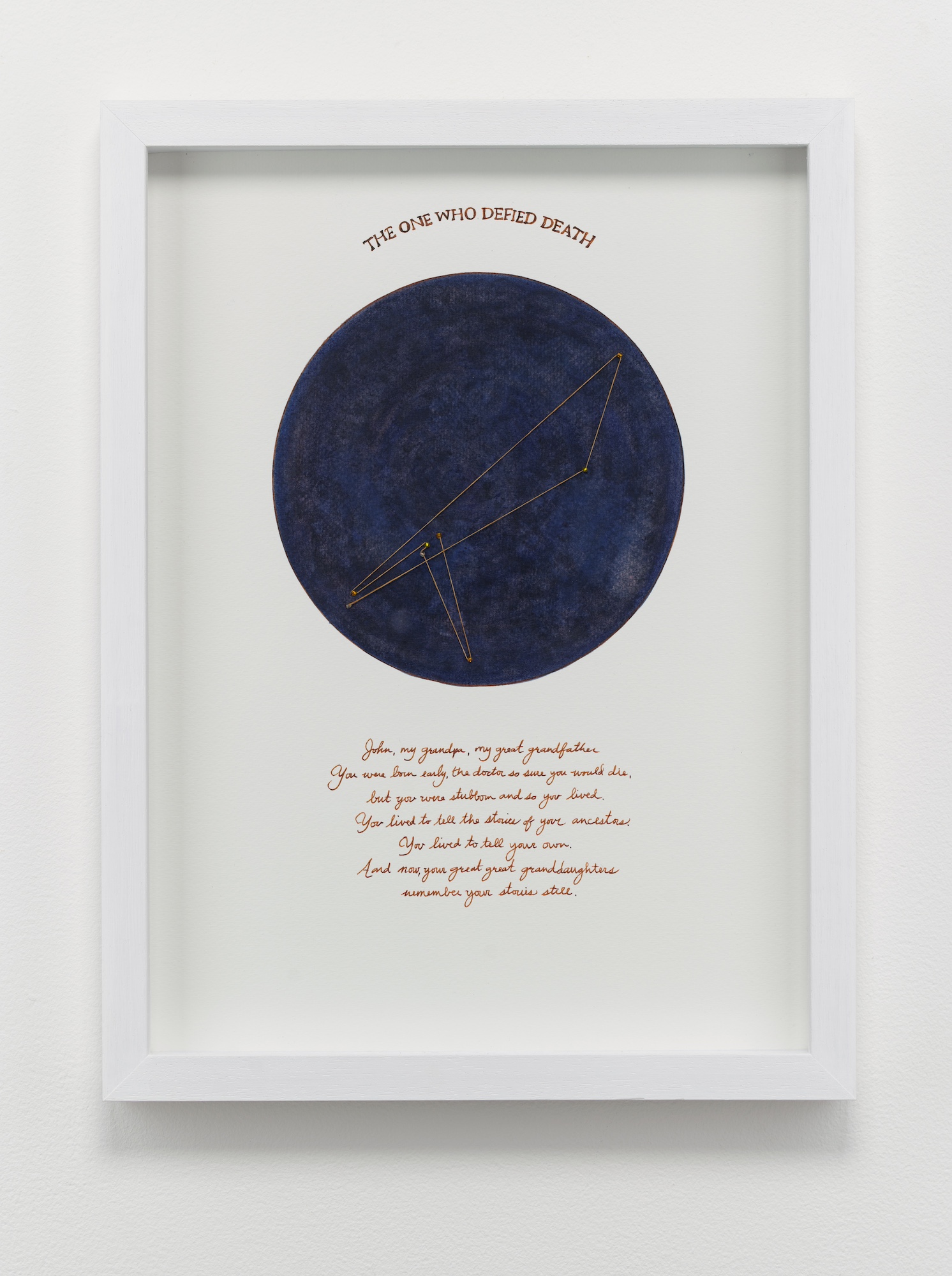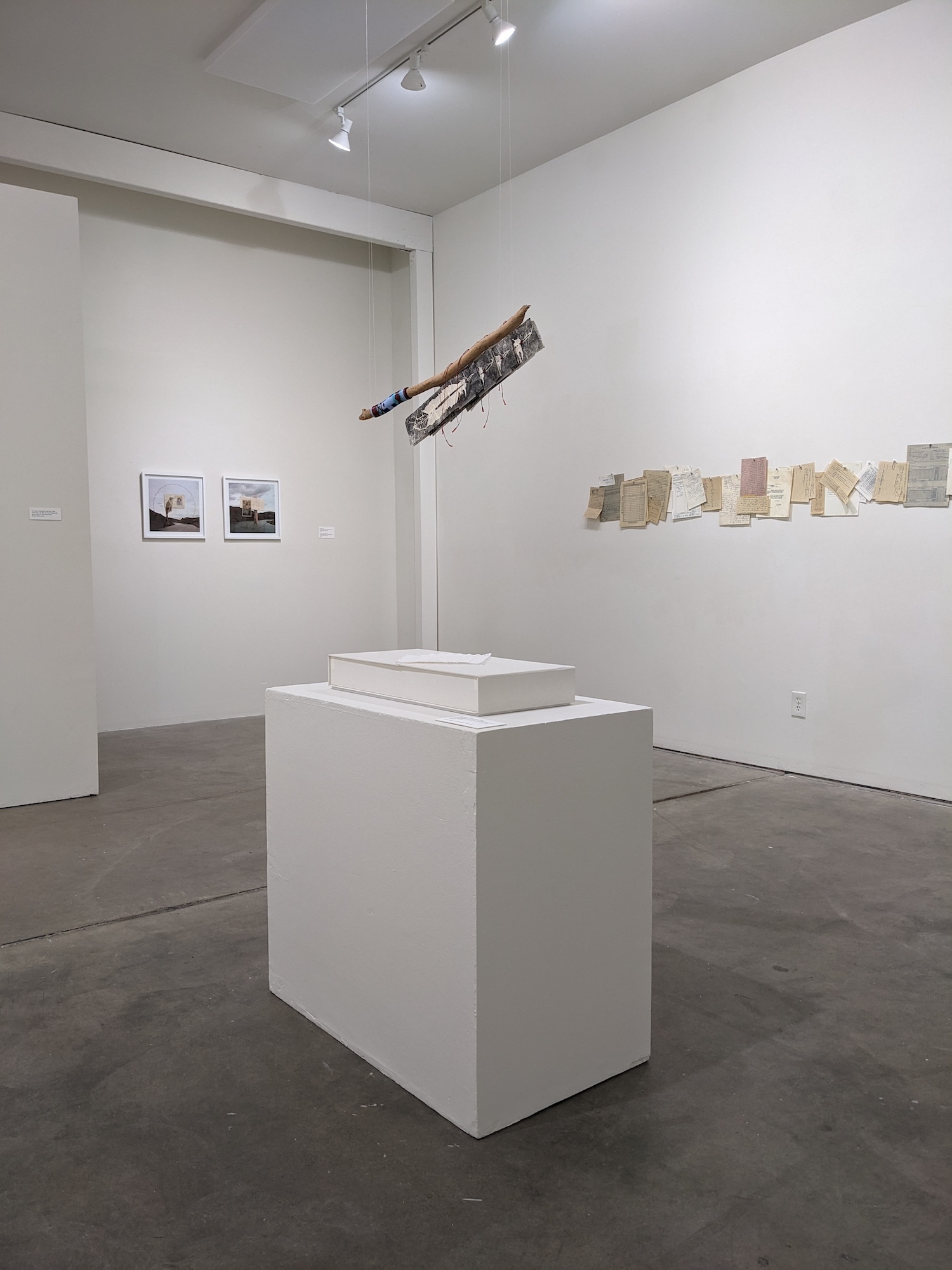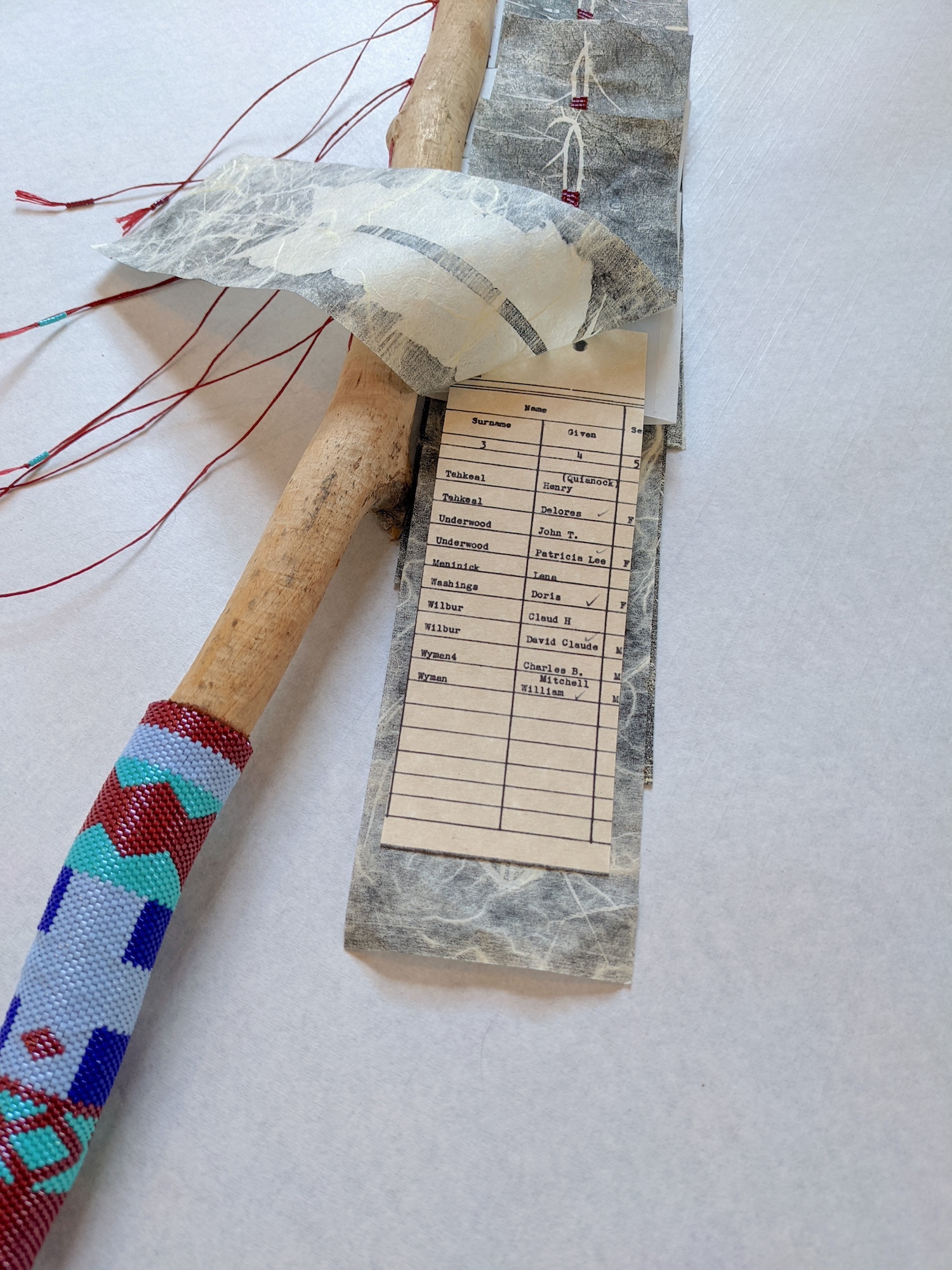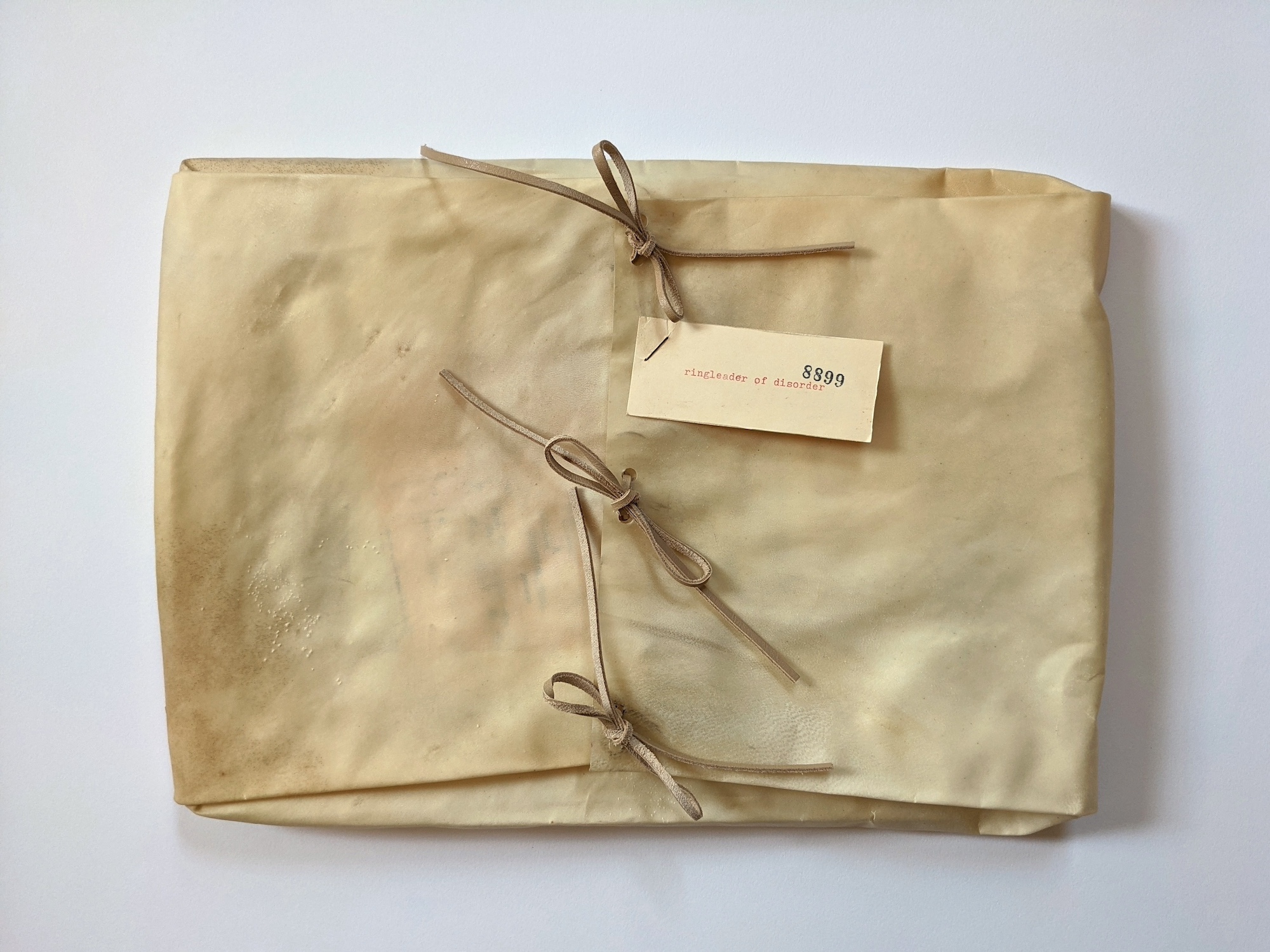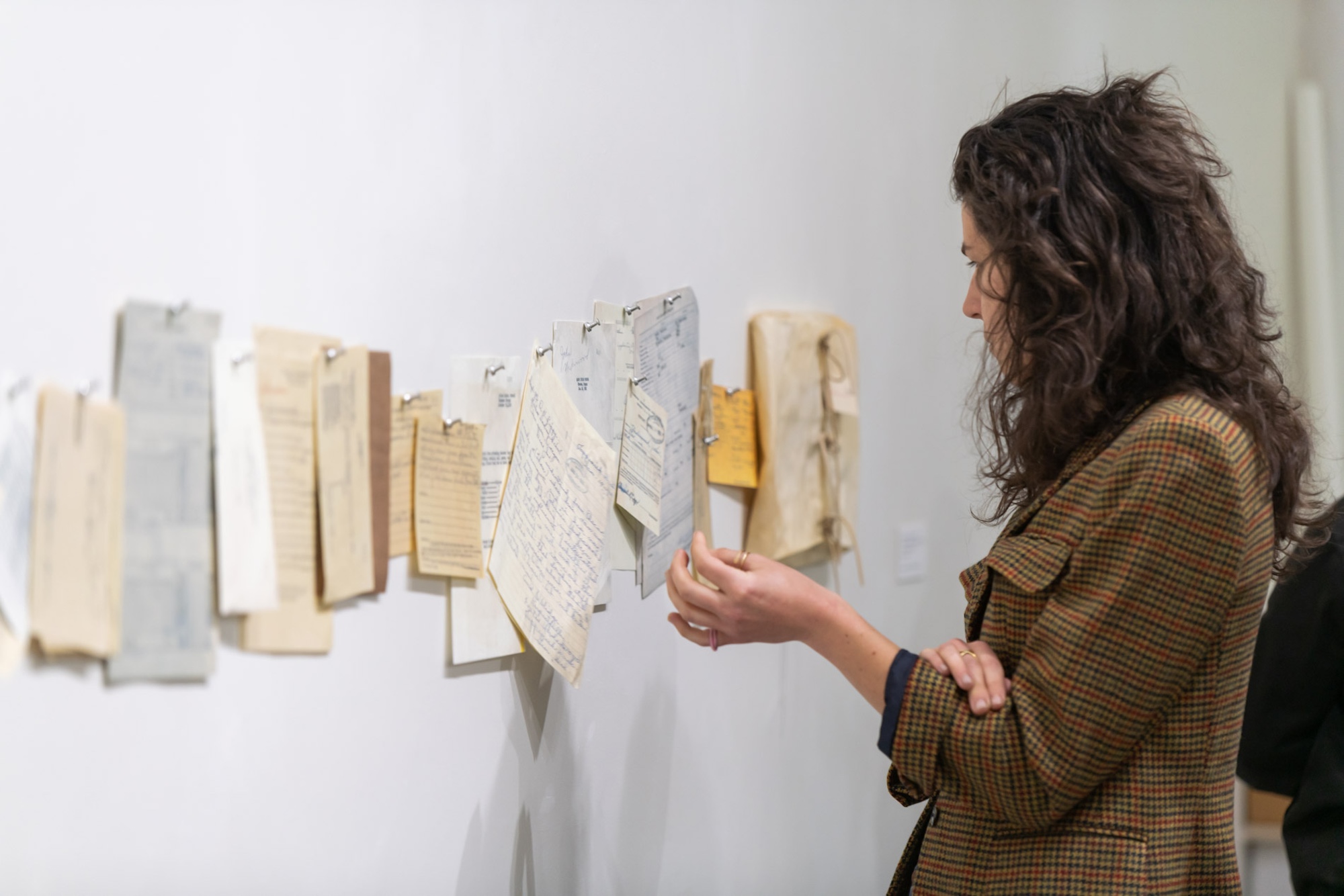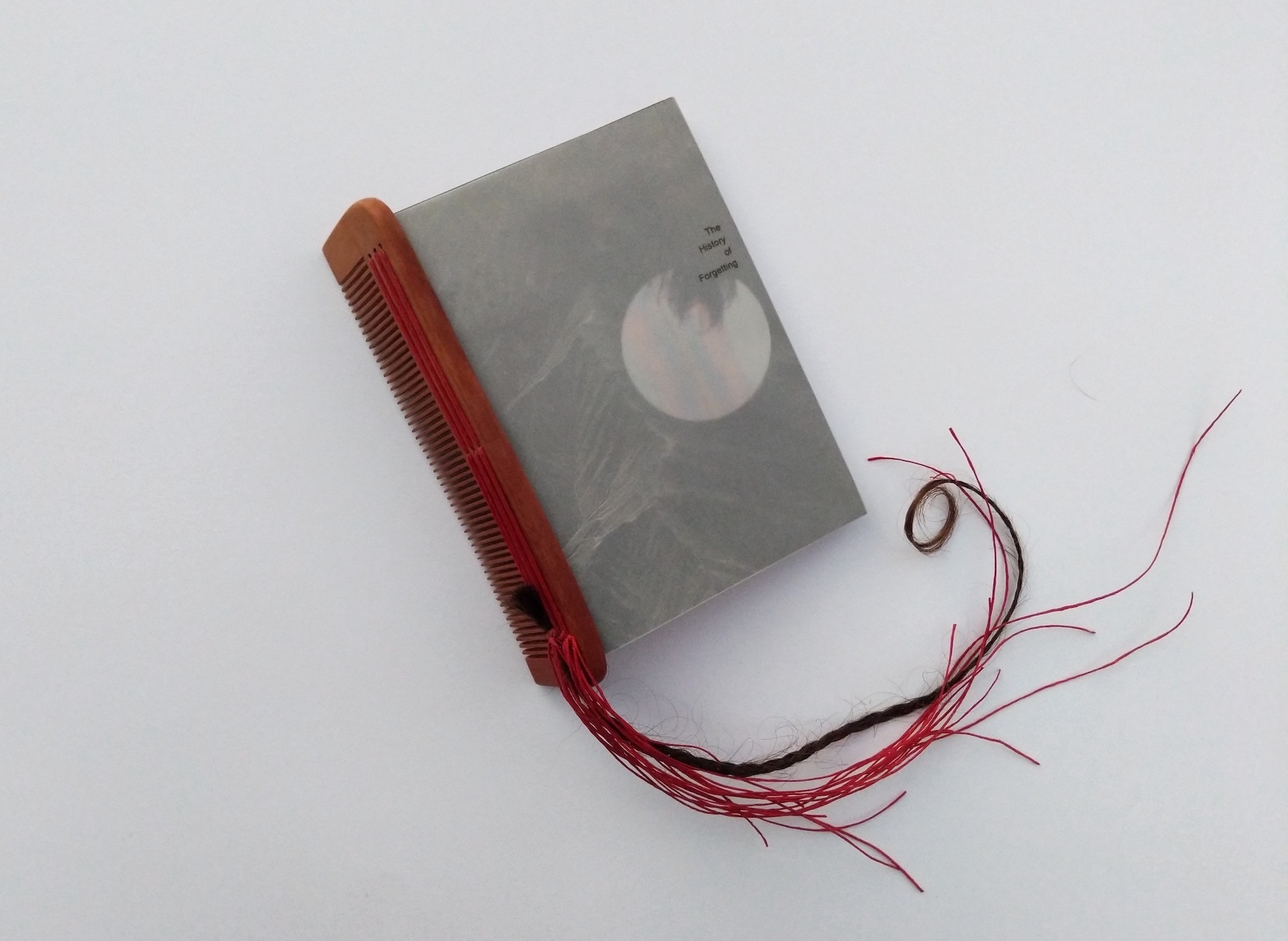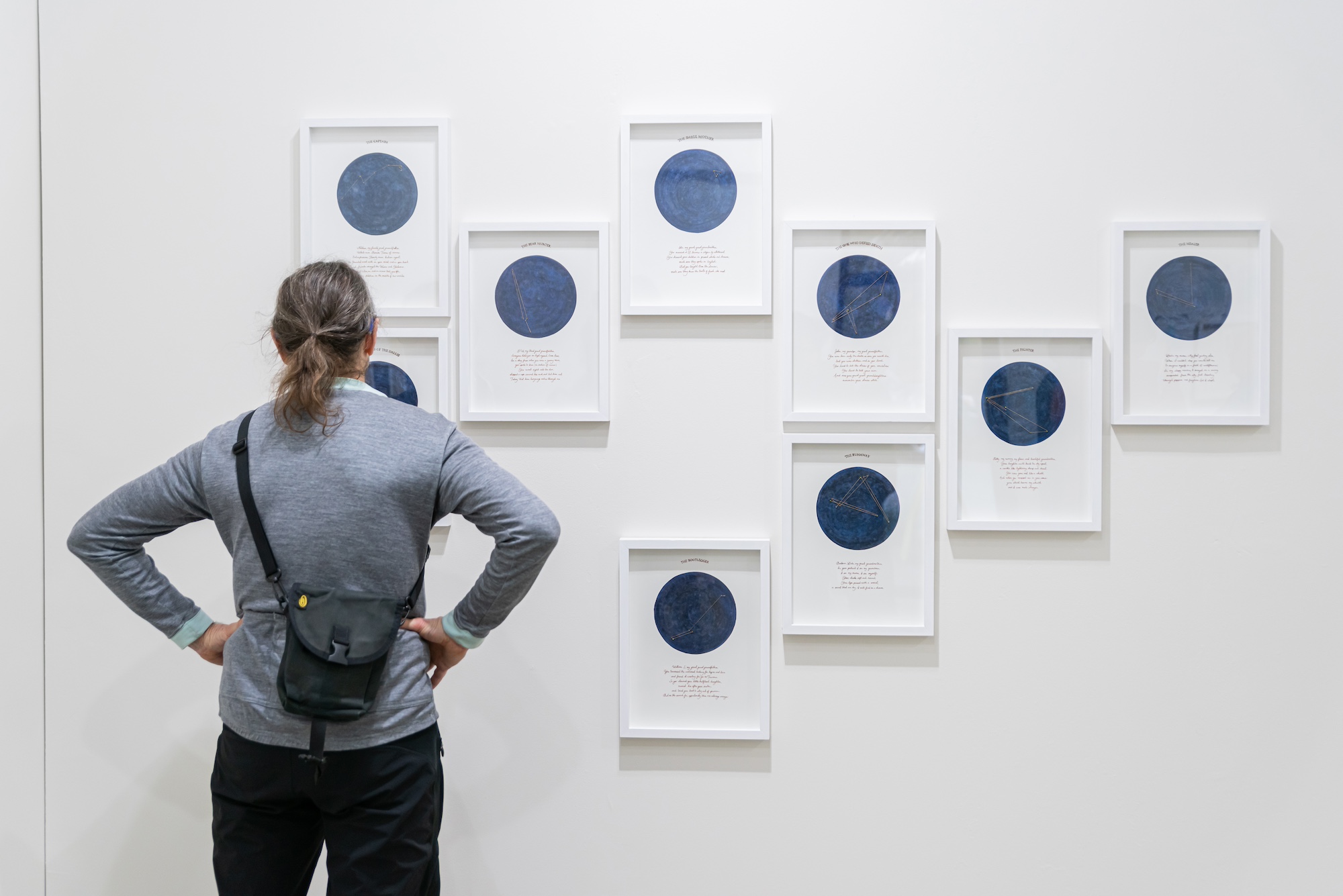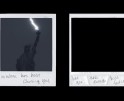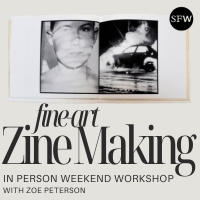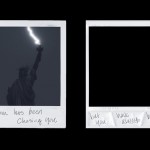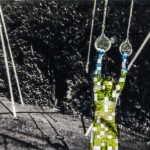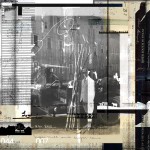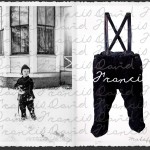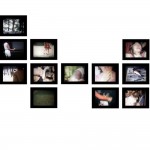Epiphany Couch: The History of Forgetting
I’m not sure how many Epiphanys you know, but Epiphany Couch is the first I ever personally met. We were introduced while she was working with Wendy Red Star, who I had previously met through the Oscar Howe Summer Art Institute. I emailed Wendy’s studio and received a reply from Epiphany. We both instantly connected with each other’s work, and I am so glad to have sent that email! Epiphany is able to show the intangible threads we have with our ancestors. Through layering, sewing, and found objects and imagery, she tells stories visually. These histories are often forgotten or lost, and her work raises these stories to our experiences. You can feel the emotion Epiphany has as she creates these works, not only creating a visual that honors a person but personally spending time with this individual’s memory. She gives viewers the chance to get to know those lost to memory. I’ve been lucky to share Epiphany’s work through Midwest Nice Art and am always excited to see the new and innovative ways she entwines image and story.
Epiphany Couch is spuyaləpabš (Puyallup), Yakama, and Scandinavian/Mixed European and grew up in caləłali (Tacoma, Washington) in the shadow of təqʷuʔməʔ (Mount Rainier). She attended the Tacoma School of the Arts and earned her BFA in Sculpture from the University of Puget Sound. Her work has been shown at Carnation Contemporary (Portland OR), Gallery Ost (New York, NY), Center for Fine Art Photography (Fort Collins, CO), The Bellevue Art Museum Education Gallery (Bellevue WA), among others. She is a 2024 Studios at MASS MoCA resident, recipient of the Ford Family Foundation’s Oregon Visual Artist Fellowship, and a selected artist for the 2024 Oregon Contemporary Artists’ Biennial. Couch lives and works in Portland, Oregon where she is a member of Carnation Contemporary Gallery
Follow Epiphany on Instagram at: @epiphany_couch_art
The History of Forgetting
Stories are community knowledge. What one person learns becomes a lesson for all. My work centers around what truths a story can teach us. By recontextualizing mediums such as bookmaking, sculpture, beading, photography, and collage, I look to present new ways through which we can examine our pasts, the natural world, and the complexities of identity and community.
My work often feels out of place in a culture that prioritizes individualism and self-reliance. In a sense, the work I create challenges this notion and instead presents a space that honors collective knowledge and the value of existing in community. My work is unapologetically personal, drawing from family stories, my childhood experience, archival research, and my own dreams.
I utilize a multidisciplinary approach to create images and sculptural works that hold space for reflection, transforming from mere things into precious objects — intimate and heirloom-like.
Epiphany Knedler: How did your project come about?
Epiphany Couch: This project has been years in the making. The first piece was created in 2020 as I was grappling with the magnitude of how many of my community and family stories have been lost or hidden due to forced assimilation. I began looking into public archives in hopes that I could unearth some of these stories. I was surprised to find photographs and paperwork about my ancestors, and my entire family really became interested in the work that I was doing, offering their own stories too. The process was really healing for us all, and personally, I was able to find within myself a great well of compassion and gratitude for my ancestors despite some of the decisions they made during their lives. The resulting work is really asking how we can emerge from a place of forgetting into one of remembering, honoring, and mending. How we can create a world of memorialization where the pain of things once lost is carefully held, acknowledged, and transformed.
EK: What relationship does memory or intimacy play within your practice, and does photography become a way to navigate these complex topics?
EC: I am an incredibly nostalgic person and my practice often involves digging deep into my own memories but also collective and ancestral memories. Many of the initial ideas for my work come from dreams, stories, or conversations with my family. My mother will share even just a side note about one of my ancestors and I am flooded with emotion for that person. My work and practice are really about discovery and being receptive to ancestral knowledge. For me, memory and intimacy are entwined. Together they suggest a connection across time and space. The History of Forgetting speaks to people I know or knew in my lifetime as well as ancestors whom I only know through stories, but I see the passing down of stories as a passing down of memory.
Photography has always been a favorite medium of mine due in part to the fact that I never have to start with a blank canvas. When I’m looking through the viewfinder it’s about choosing what I’d like to focus on, what I’d like to frame. Similarly, with archival photographs and family photographs, I already have something to start with, something to guide me and to expand on. Painting and drawing were always hard for me because I didn’t know what to respond to. For me, photography is the best tool to navigate topics of ancestral knowledge and the complicated nature of memory because it feels more like a collaboration than pure creation. In a sense, I am collaborating with my ancestors through images of them. I am collaborating with the land through images of her. Photography also feels very real for people and although I love that about the medium, I also try to reference the fallible nature of memory. I like to layer photos or print them on vellum to give the sense that although this photograph is real, sort of like proof, it also has a whole story behind it that we don’t know. A smiling face in a photograph doesn’t always mean a happy heart.
EK: Is there a specific image that is your favorite or particularly meaningful to this series?EC: Hard question! But yes, I do seem to have a soft spot for Legacy. This work is both bittersweet and powerful in that it honours the stories we carry, yet also acknowledges that so much has been taken from native communities—material culture, language, and practices stolen, misplaced, or forbidden. This work speaks to the rich legacy of storytelling within my family while also holding space for the stories that I will never know. In my family stories are the legacy that I have been given and they will be the legacy that I leave behind. These stories are the greatest gift I’ve received. They shape my worldview, they shape my view of myself, and my view of humanity.
EK: Can you tell us about your artistic practice?
EC: My practice is really my way of investigating human connection, kinship, and storytelling. My artwork is how I’ve been called to take up the role of my generation’s storyteller—just as my ancestors did through words. When I was growing up my mama would tell the same stories over and over. As a child, I loved the way she told stories. As a teenager, I found her repetition annoying. But as an adult, I realized that this is her act of resistance, the way she chooses to hold onto the traditions and values she was raised with. My practice has changed over the years but has always carried this same resistance. Whether through collage, assemblage, photography, or beadwork, I am always piecing things together to create a visual story.
My studio is full of boxes and flat files of magazine clippings, book clippings, reproductions of family photographs, my own photographs, and all sorts of other things I’m attracted to. In a lot of ways, I’m just a really organized packrat so that I can surround myself with the fodder that I need for the work. Sometimes I will shoot new photography for a project, but often the photos I utilize have been taken years before, and through this exploration of my collection, I realize where the photo needs to end up. I often have an initial vision of what a work will look like, but I also give it space to evolve and change as I create. Recently, I’ve been developing pieces that are completely planned out from the start and I’m experimenting with this. I have not worked this way before but I’m curious to see if I can pull it off.
EK: What’s next for you?
EC: I’m currently working on my first large-scale public artworks, one set for Oregon State University in Corvallis, Oregon, and another for a mixed-use building in Washougal, Washington. These works are both photo-based and will be installed later this year in Fall 2024. Typically my work is rather small, not more than 20 by 20 inches but these works will be between 4 and 8 feet each. I am really enjoying the process of working on a larger scale while also trying to maintain the intimate quality of my past work. So far it is an exciting challenge!
*photo credit Mario Gallucci
Epiphany Knedler is an interdisciplinary artist + educator exploring the ways we engage with history. She graduated from the University of South Dakota with a BFA in Studio Art and a BA in Political Science and completed her MFA in Studio Art at East Carolina University. She is based in Aberdeen, South Dakota, serving as a Lecturer of Art and the co-curator for the art collective Midwest Nice Art. Her work has been exhibited in the New York Times, Vermont Center for Photography, Lenscratch, Dek Unu Arts, and awarded through the Lucie Foundation, F-Stop Magazine, and Photolucida Critical Mass.
Follow Epiphany Knedler on Instagram: @epiphanysk
Posts on Lenscratch may not be reproduced without the permission of the Lenscratch staff and the photographer.
Recommended
-
Melissa Grace Kreider: i will bite the hand that feedsSeptember 25th, 2024
-
Taylor Hedrick: Sun FeltSeptember 23rd, 2024
-
Lisa Beard: Because It’s ThereSeptember 22nd, 2024
-
Angela V. Scardigno: Greetings from El ValleAugust 27th, 2024
-
Ellen Mahaffy: A Life UndoneJuly 4th, 2024

